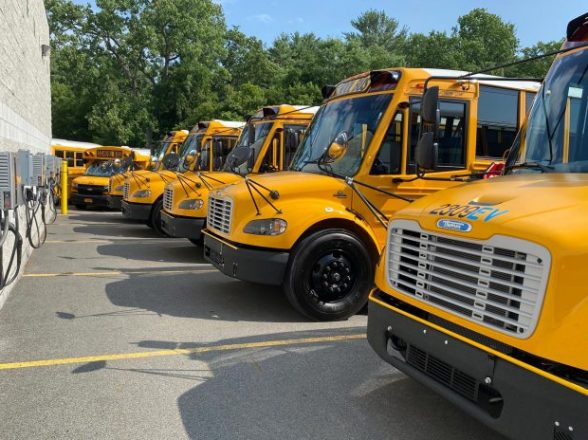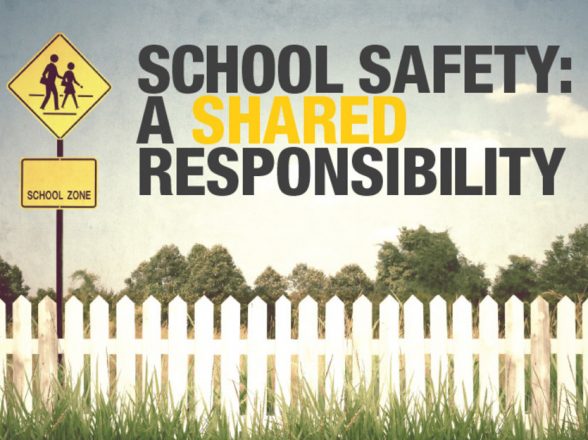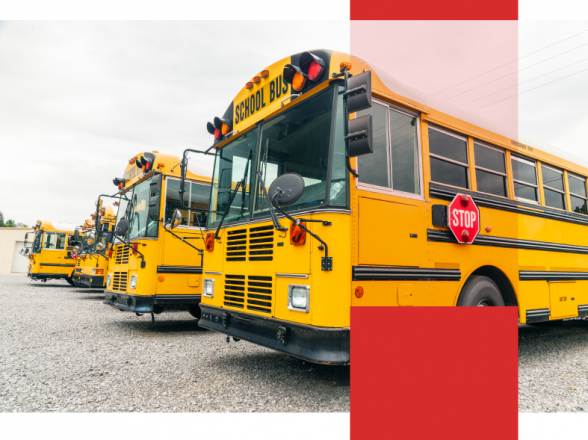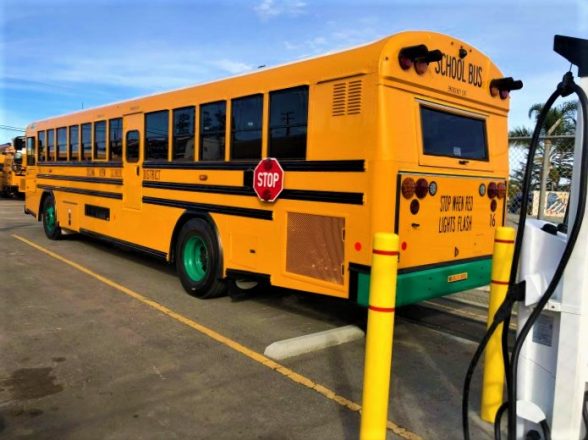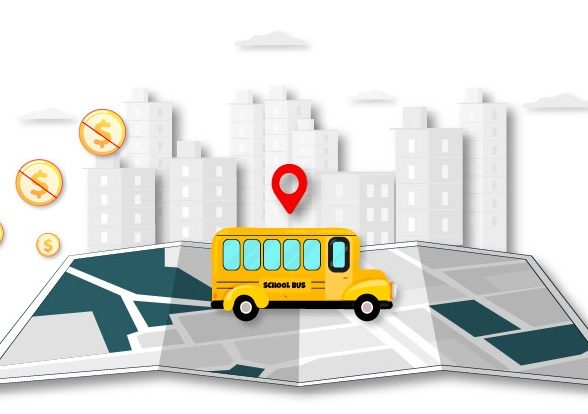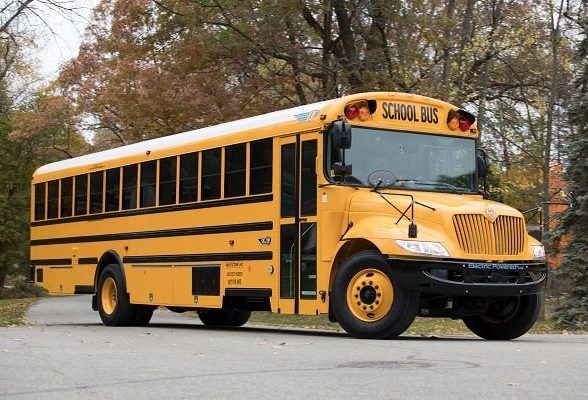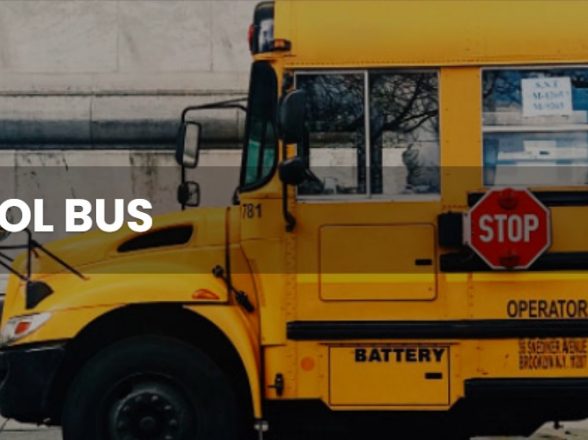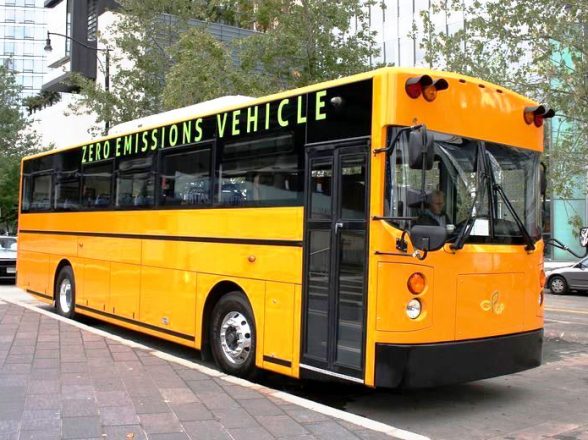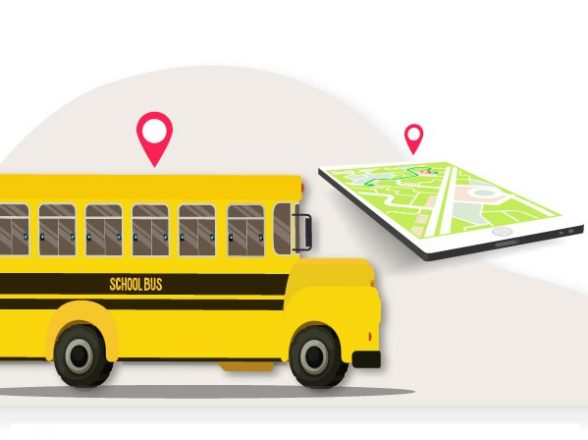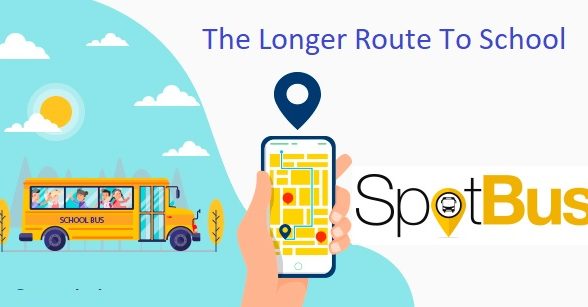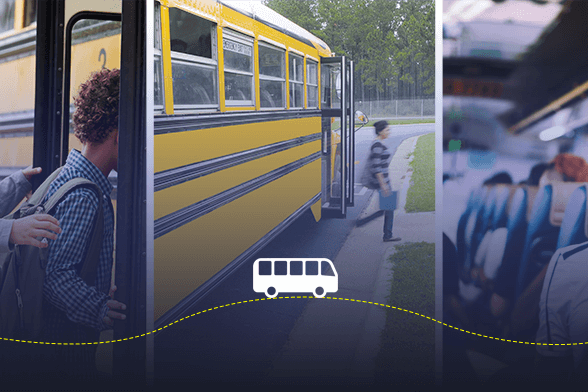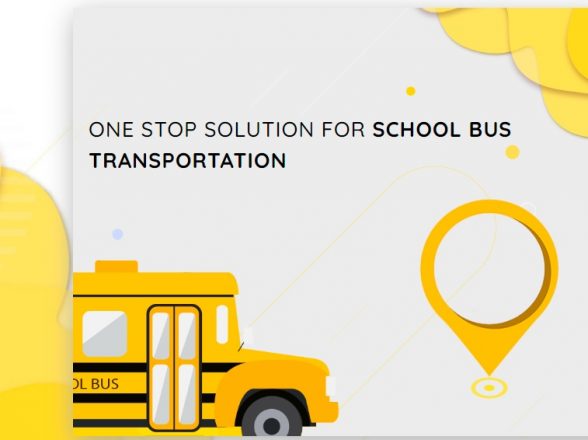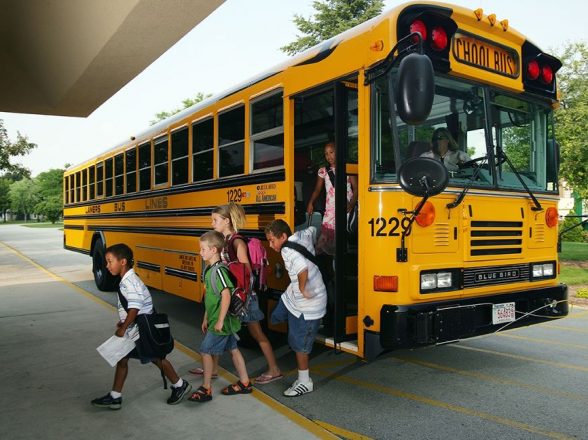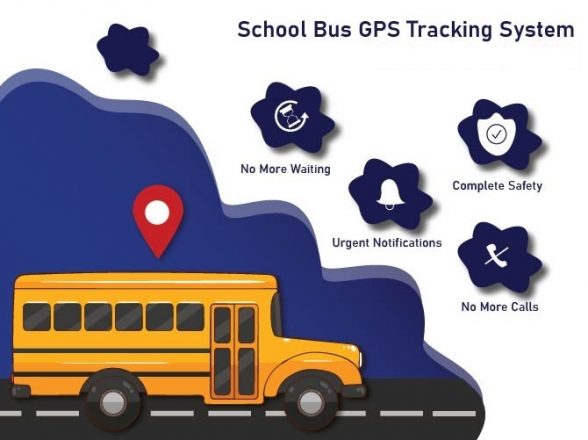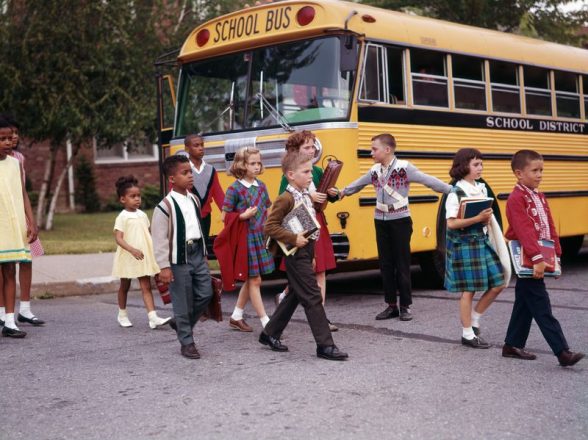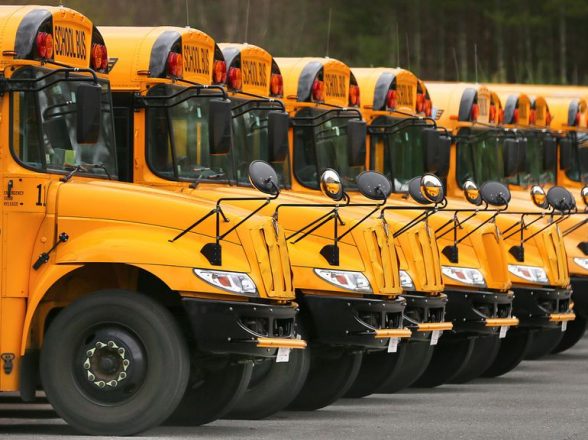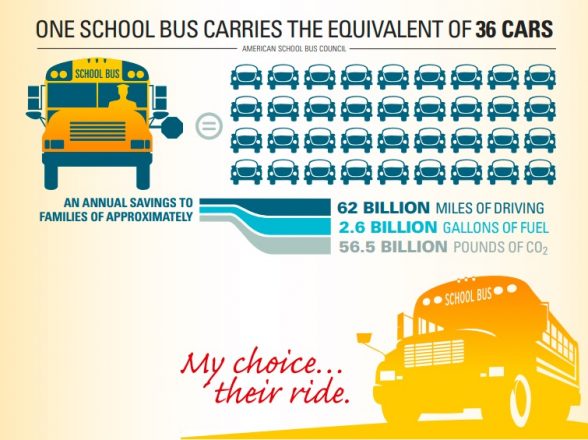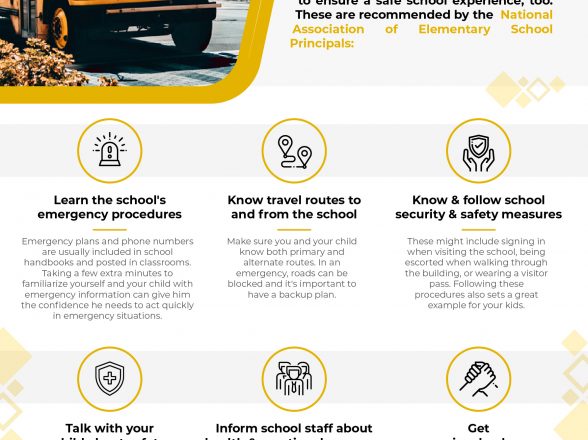How School Bus Benefits Communities
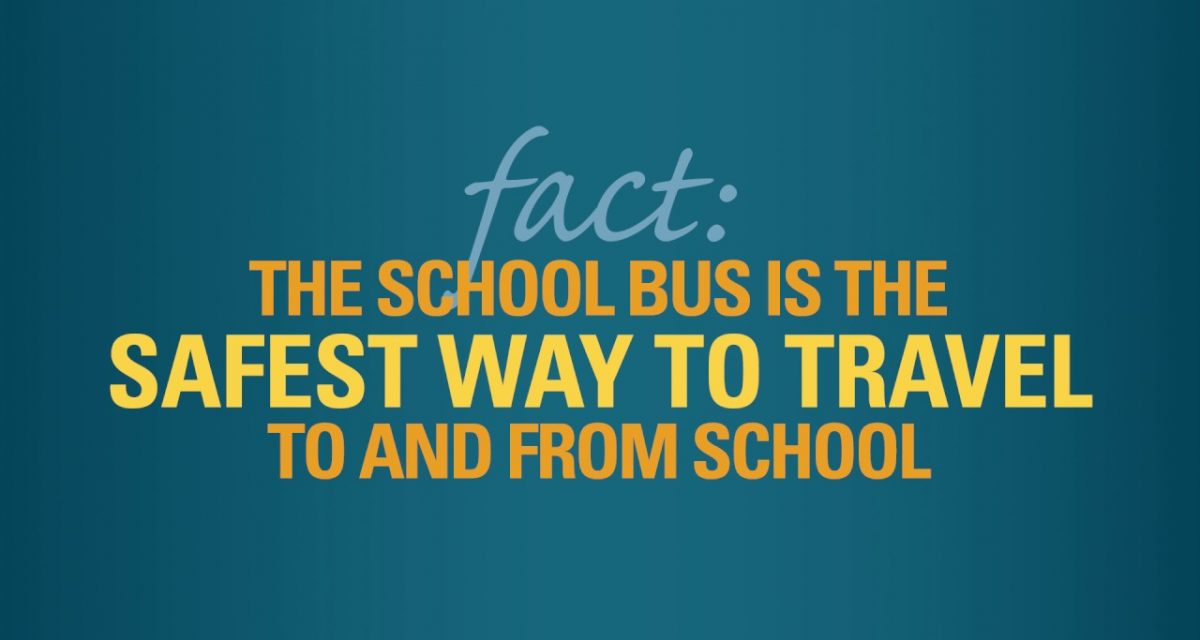
Since the first all-steel school bus was built in 1930, school buses have been improving the lives of families all over the country. Today they transport 26 million students to and from school each day, saving families time, convenience and money. But if you think that families of school-age children are the only ones who benefit from school bus ridership, you might want to think again.
Like other forms of public transportation, the school bus provides important benefits to the entire community—not just those who ride. More than half of the 50 million students who attend school every day take the school bus, saving about 17 million cars from joining the daily commute. Without it, rush hour could mean more time spent in gridlock traffic.
Because the school bus saves families about 62 billion miles of driving each year, there are environmental benefits too. Fewer cars on the road mean a reduction of about 56.5 billion pounds of CO2 annually. That’s more CO2 than a 747 would emit during a century-long flight! And those environmental benefits have only gotten better each year as student populations grow and school buses become even cleaner.
Buses reduce traffic. Suppose the elementary school closest to your house serves about 500 students. Can you imagine what the surrounding roads would look like at 8 am if a few hundred parents drove there separately, all trying to get to the school to drop off their children? In fact, each school bus removes an average of 36 cars from the roads.
Buses reduce pollution. When you calculate how many cars are removed from the roads by school bus ridership, it equates to over one billion pounds of CO2 emissions per year for just one of the 50 states. That amounts to a massive impact on the environment over time.
Buses make school accessible for all. Since not everyone owns a car or lives within walking distance of their school, a bus may be the only method of transportation that they have. Access to quality education is critical for all children, which makes school buses an absolute necessity.
Buses are safer. As we mentioned in our last blog post, school buses were designed with student safety in mind. Their yellow color is easily seen by other drivers, even in their peripheral vision. The sides of the vehicle are reinforced to protect passengers in a crash, and the high seat back also provide protection during an impact. Parents who think that their children are safer if they personally drive them school should consider this: students are about 20 times more likely to arrive at school safely than if their parent drives them. For teen drivers, this statistic increases to 50 times more.
Safety, however, is the most significant benefit that the school bus has to offer. Students are about 70 times more likely to arrive to school safely if they take the school bus instead of traveling by car. With teen drivers crashing at higher rates than adults, the school bus provides a much safer alternative. Its passengers can socialize, text and simply be children without the deadly risks involved with distracted driving—risks that affect everyone on the road.
Educators, environmentalists, parents and communities can all appreciate the many contributions of the school bus. They save hundreds of lives each year, provide millions of jobs nationwide, improve traffic while reducing pollution, and are an important part of the education system.
Every community deserves the school bus.



